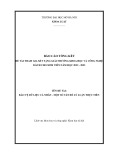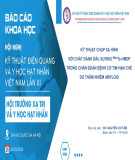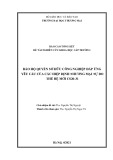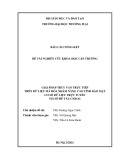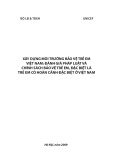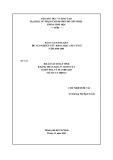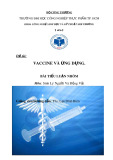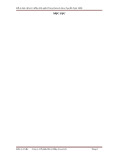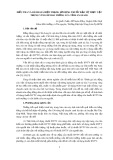
RESEARCH Open Access
Autologous Transplantation of Adipose-Derived
Mesenchymal Stem Cells Markedly Reduced
Acute Ischemia-Reperfusion Lung Injury in a
Rodent Model
Cheuk-Kwan Sun
1,2†
, Chia-Hung Yen
3†
, Yu-Chun Lin
4,5
, Tzu-Hsien Tsai
5
, Li-Teh Chang
6
, Ying-Hsien Kao
7
,
Sarah Chua
5
, Morgan Fu
5
, Sheung-Fat Ko
8
, Steve Leu
4,5*
and Hon-Kan Yip
4,5*
Abstract
Background: This study tested the hypothesis that autologous transplantation of adipose-derived mesenchymal
stem cells (ADMSCs) can effectively attenuate acute pulmonary ischemia-reperfusion (IR) injury.
Methods: Adult male Sprague-Dawley (SD) rats (n = 24) were equally randomized into group 1 (sham control),
group 2 (IR plus culture medium only), and group 3 (IR plus intravenous transplantation of 1.5 × 10
6
autologous
ADMSCs at 1h, 6h, and 24h following IR injury). The duration of ischemia was 30 minutes, followed by 72 hours of
reperfusion prior to sacrificing the animals. Blood samples were collected and lungs were harvested for analysis.
Results: Blood gas analysis showed that oxygen saturation (%) was remarkably lower, whereas right ventricular
systolic pressure was notably higher in group 2 than in group 3 (all p < 0.03). Histological scoring of lung
parenchymal damage was notably higher in group 2 than in group 3 (all p < 0.001). Real time-PCR demonstrated
remarkably higher expressions of oxidative stress, as well as inflammatory and apoptotic biomarkers in group 2
compared with group 3 (all p < 0.005). Western blot showed that vascular cell adhesion molecule (VCAM)-1,
intercellular adhesion molecule (ICAM)-1, oxidative stress, tumor necrosis factor-aand nuclear factor-B were
remarkably higher, whereas NAD(P)H quinone oxidoreductase 1 and heme oxygenase-1 activities were lower in
group 2 compared to those in group 3 (all p < 0.004). Immunofluorescent staining demonstrated notably higher
number of CD68+ cells, but significantly fewer CD31+ and vWF+ cells in group 2 than in group 3.
Conclusion: ADMSC therapy minimized lung damage after IR injury in a rodent model through suppressing
oxidative stress and inflammatory reaction.
Background
The lung maintains its unique function of effective gas-
eous exchange because of its remarkably large alveolar
surface area, its rich and delicate alveolar capillary net-
work, as well as its physical properties (i.e. elasticity and
compliance). On the other hand, it is vulnerable to
acute ischemia-reperfusion (IR) injury in situations such
as resuscitation from hemorrhagic/septic shock and
recovery from cardiac surgeries where pulmonary blood
supplies have to be clamped, and also after lung trans-
plantation [1-4]. Inflammatory cells have been reported
to be the key coordinators of IR-elicited pulmonary
injury in response to inflammatory response and oxida-
tive stress [5-7]. Additionally, the productions of reactive
oxygen species (ROS), pro-inflammatory cytokines, and
adhesion molecules have also been found to be crucial
contributors to lung IR injury [6,8-12].
Acute lung injury of different etiologies is known to
be associated with high in-hospital morbidity and mor-
tality [13-15]. Previous studies have shed some light on
several potential therapeutic strategies including the use
* Correspondence: leu@mail.cgu.edu.tw; han.gung@msa.hinet.net
†Contributed equally
4
Center for Translational Research in Biomedical Sciences, Kaohsiung Chang
Gung Memorial Hospital and Chang Gung University College of Medicine,
Kaohsiung, Taiwan
Full list of author information is available at the end of the article
Sun et al.Journal of Translational Medicine 2011, 9:118
http://www.translational-medicine.com/content/9/1/118
© 2011 Sun et al; licensee BioMed Central Ltd. This is an Open Access article distributed under the terms of the Creative Commons
Attribution License (http://creativecommons.org/licenses/by/2.0), which permits unrestricted use, distribution, and reproduction in
any medium, provided the original work is properly cited.





